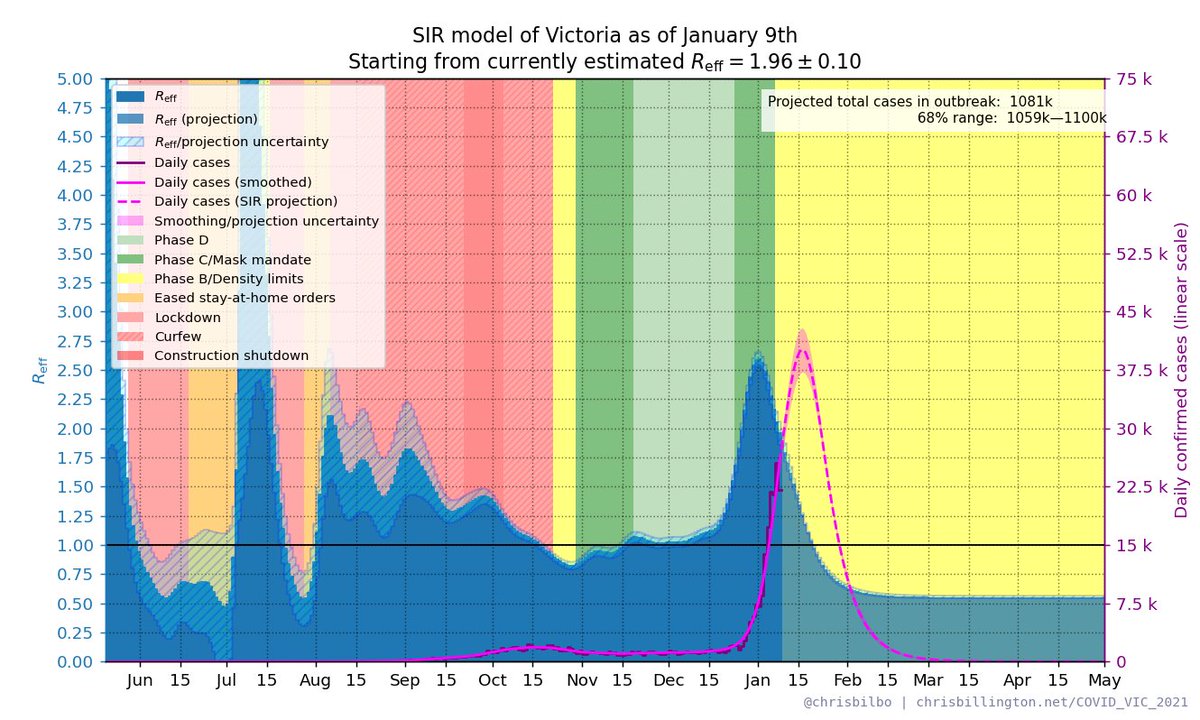
With the projected peak of the NSW outbreak approaching, it's worth showing how sensitive my projection is to one of its main assumptions: the fraction of infections that are being captured by testing. 1/6
Current projection is based on the assumption that 20% of infections are being detected. That implies there are a lot of infections contributing to immunity that have not been detected via testing. 2/6 

If the detection rate is higher, say, 30%, then there are not as many undetected infections out there, and therefore less immunity. High immunity is required for infections to peak, so that implies the peak is a little further away (and higher, in terms of detected cases) 3/6 

If the detection rate is 40%, it's higher and later still (note larger y axis range than the previous tweets). 4/6 

You can see the timing of the peak is not very sensitive to the assumed detection rate. The height is, for obvious reasons: modelled infections always peak at the same height, modelled cases peak higher if we're detecting more of those infections. 5/6
If my projections turn out to not be very accurate about the peak height, this is the assumption I think most likely to be responsible. 6/6
To add to this, I think we can all but rule out detection rates much less than 20%, because projections based on a lower value show a peak would have already happened. Here's 15%: 

• • •
Missing some Tweet in this thread? You can try to
force a refresh

































